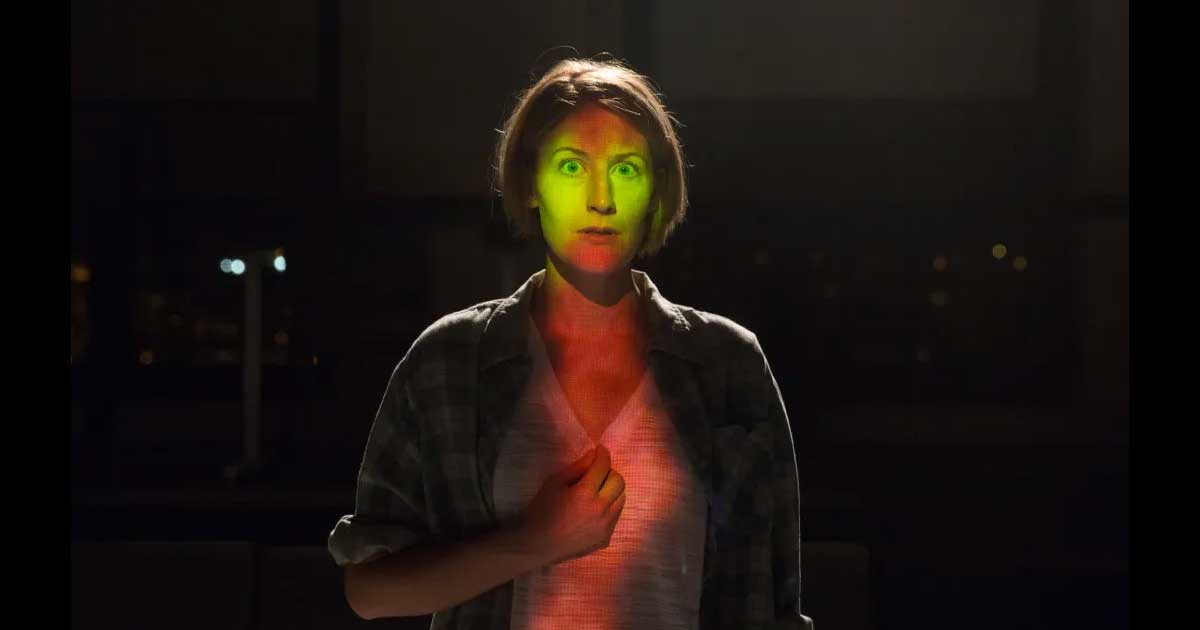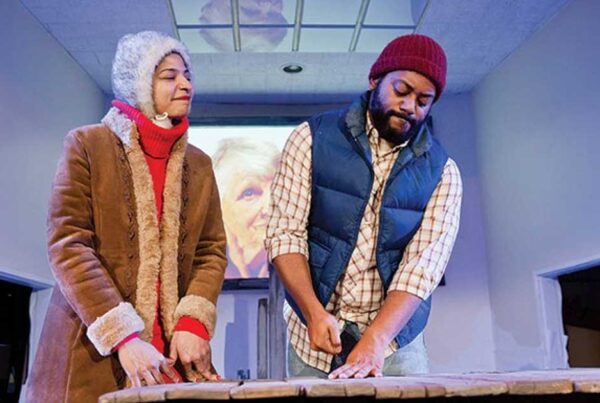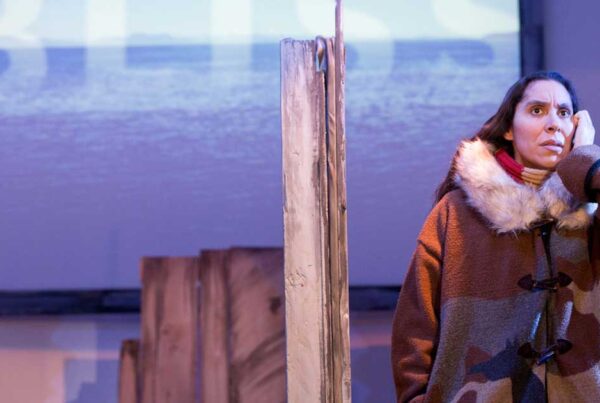
The Pittsburgh Tatler – British playwright Tom Stoppard has built a career writing plays about ideas. His first play, Rosencrantz and Guildenstern Are Dead, was an existentialist comedy, in which two minor characters from Hamlet take center stage and obsess over (what we know to be their imminent) death. His 1993 masterpiece Arcadia takes on the subjects of chaos, chance, the second law of thermodynamics, and the nature of evidence and truth in our understanding of history. Other of his plays – like Jumpers, Travesties, and The Invention of Love – also weave scientific, philosophical, historiographical, mathematical, and psychological ideas and allusions into dense (and sometimes quite comic) meditations on the meaning of life, the existence of a higher being or order to our lives, and the role played by chance and coincidence.
The Hard Problem may be Stoppard’s headiest play to date, with the pun absolutely intended. The central intellectual question here is the “hard problem” of the title: how do you explain consciousness? Scientific materialists seek explanations for mental activity in the physical workings of the brain: according to this position, all behavior, thought, decision-making, and ethical reflection are evolutionarily determined and stem from chemical and electrical signalling in the brain. This model works well to explain many cognitive functions, such as reactions to pain stimuli or to psychological stressors: the brain is like an enormous computer, processing inputs in complicated but essentially predictable ways.
The materialist approach has a more difficult time explaining our ability to think about our thoughts and behavior, however. This is a question that has dogged scientists since the mid-1990s: if thought and behavior happen on the level of molecules and chemicals, why doesn’t our cognitive processing go on without any self-reflection at all (as we presume it does in most insects and animals)?
In The Hard Problem, Spike (Andrew William Smith), a young up-and-coming professor, embodies the first of these two positions: he’s Darwin, Mendel, Crick and Watson, adamant in his conviction that there is no problem or question that cannot and will not find concrete scientific explanation in the material world. Hilary (Alex Spieth), a psychology student, is unconvinced: materialism’s failure to explain emotions like sorrow leads her to wonder if there might be some explanation beyond the measurable world – like, for example, God.
The play drops us in medias res as Spike and Hilary argue about the “prisoner’s dilemma” in Hilary’s apartment, after Spike has given her a ride home. He’s agreed to help coach her for a big job interview at the Krohl Institute for Brain Research, but of course he has familiar ulterior motives for his seemingly altruistic act, and consequently the question of what constitutes altruism – as in: is there any such thing as true selflessness, or do all acts of altruism stem from self-interest? – is another running theme throughout the play. The ideas come fast and furious as the scene moves from Hilary’s apartment (where, after she sleeps with Spike, he discovers her praying) to the Krohl Institute (where she successfully competes against math genius Amal (Vinny Anand) for a job in a psychology lab run by Leo (Ken Bolden)), to the upscale dining room of hedge fund squillionaire Jerry Krohl (Randy Kovitz) and his adopted daughter Cathy (Grace Vensel). In between, Hilary serendipitously reconnects with Julia (Fredi Bernstein), an old pal from high school who teaches Pilates at the Krohl and also happens to be the girlfriend of another Krohl scientist, Ursula (Dana Michelle Griffith). Along the way, in addition to the problem of consciousness and the question of what constitutes altruism, the play also ranges over the mystery of coincidence and the challenges of predicting human behavior, as well as game theory, quantification of risk, ethics, morality, and sexual politics in the workplace.
Stoppard being the writer he is, many of these ideas are woven together: his worlds are carefully constructed to work in mysterious ways. He draws wry connections, for example, between the human mind and hedge funds: no one in the play can explain how those work, either. Likewise, the supposedly “rational” stock market managed by complex computer algorithms can suddenly appear to be mysteriously irrational and fail to “compute.” Some things, he seems to believe, will always elude human understanding. Stoppard also drops ideas and themes like Easter eggs: the “prisoner’s dilemma” that is the subject of the first scene’s argument returns later, when Hilary chooses to take the fall for a research mistake made by her colleague Bo (Claire Hsu); and coincidence (a favorite Stoppard element) is both the subject of inquiry (Cathy asks Jerry to define it in their first scene) and a driver of the plot (not only does Hilary bump into Julia at the Krohl, but Cathy turns out to be Hilary’s biological child, a “coincidence” the play takes no pains to hide, and the production even less).
Still, it’s a lot of information to take on board, and many of director Rachel Stevens’s choices layer an additional set of concepts onto this idea-heavy play. Characters watch from positions around the playing space as scenes unfold on stage, and the dramaturgical function of their presence as witnesses is unclear. Is it to signal that the characters are like us? Are we meant to understand that the scene in front of us is a kind of psychological experiment that the other characters are watching play out? Or are they giving theatrical form to the notion of self-reflexivity – that is, in watching their own play, do the characters stand in for the way the mind reflects on itself? If I thought long and hard enough, I might come up with another half dozen ways to interpret this choice; unfortunately, the production doesn’t offer many clues as to which might have been the director’s intent.
Similarly, the transitions between scenes, while admirably fluid, either contain perplexing narrative content – for example, characters laugh and giggle as they put together the Krohl dining room – or unnecessarily underline themes and ideas that are already heavily present – as when the lighting design (Andrew David Ostrowski) throws a red glow on Hilary’s chest, to signify that she is more “heart than head,” or the media design (Joe Spinogatti) projects a brain scan or uterine ultrasound on the floor. Stevens also begins the play – and then occasionally punctuates it – with moments in which Hilary pauses and takes a Deep Significant Breath, adding yet another underexplained narrative thread to a play that already threatens us with information overload.
Stephanie Mayer-Staley’s scenic design whisks various pieces of lab/office furniture into place on wheels and then adroitly transforms them to establish the various locales needed for the play’s action – bedroom, hotel room, dining room, living room, as well as office and lab. The lines are clean and modern. Upstage of the playing space is a maze of clutter through which audience members must traverse to reach their seats, filled with boxes, mementos, household items, sports equipment, and other remnants, all piled up willy nilly. Both the objects themselves and the labyrinthine path through them evoke an attic of the mind, the vast storehouse from which a sense of self and history emerges. That’s a nifty idea in and of itself, but one that’s only tenuously connected to the concerns of the play (identity and memory are not primary thematic threads), and when Hilary disappears into that space at the end of the play, after having decided to abandon science for philosophy (where, to my mind, she’d been dwelling all along!), it’s not clear whether we’re supposed to read the movement as a retreat into the subconscious, a trip down memory lane, or something else.
Like I said, this is a heady play. So skip the wine at the lobby bar and opt for coffee instead: you’ll need it to keep up.




